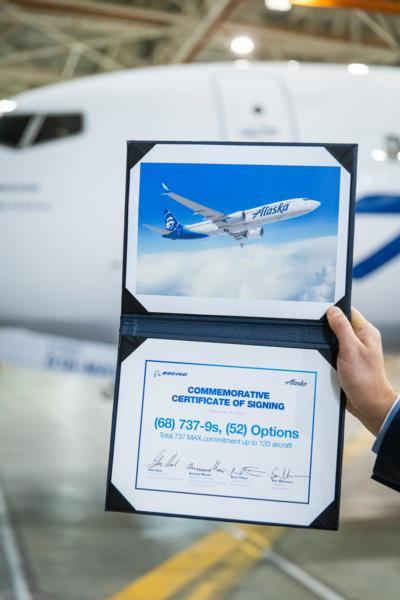Going All-Boeing
Alaska Airlines, true to its Pacific Northwestern roots, is making ready to transition back to an all-Boeing fleet.

For a period of time measurable in years, the Seattle-based air-carrier has been divesting itself of Airbus narrow-body aircraft come to it by way of the carrier’s 2016 acquisition of Virgin America, which operated an all-Airbus fleet.
In late 2020, as part of a sweeping fleet simplification initiative, Alaska announced plans to retire the entirety of its Airbus aircraft by 2023. At that time, the airline’s roster of in-service planes comprised nearly seventy Airbus jets, including ten A319s, 49 A320s, and ten A321neos. Over the last two years, Alaska retired its complements of A319s and A320s, Ergo, the only Airbus model remaining on the carrier’s chopping-block is the A321neo—the suffix of which might now connote Newly-Excluded from Operations.
Alaska has revised its schedule after a fashion consistent with the elimination of all A321neos by 01 October 2023. However, the plan, as with all things Part 121, remains subject to change.
Upon the retirement of its last Airbus, Alaska Airlines will once again reap the benefits of a fleet consisting exclusively of Boeing 737s. By predicating future operations solely upon a single aircraft family, the air-carrier summarily and significantly streamlines its pilot training, maintenance, maintenance technician training, aircraft maintenance tracking, parts inventory, and regulatory burdens.
To offset the lost capacity represented by the retirement of its Airbus jets, Alaska has ordered a number of 737 MAX aircraft certain to boost the airline’s negotiating clout with Boeing.
Alaska’s Airbus A321neos are young—averaging under five-years since rolling off assembly lines in Hamburg, Germany and Mobile, Alabama. Many of the outgoing specimens were delivered to the airline in 2018 and 2019, well after the Virgin merger was finalized. Alaska never wanted the aircraft, but—in point of fact—had no legal recourse by which to back out of accepting such.

Currently, Alaska Airlines is about the business of finding buyers for its almost-new A321neos—likely a simple matter given the model’s worldwide popularity and extensive support networkCritics of Alaska’s decision to divest itself of Airbus planes—many of whose aviation expertise extends barely beyond plane-spotting and all-night Microsoft Flight Simulator jags—fail to comprehend the immense advantages realized by air-carriers operating wholly or nearly homogenous fleets. Within the singular context of pilot training, an all-737 fleet affords Alaska the luxuries of standardizing pilot initial and recurrent training, while minimizing—if not outright eliminating—differences training. What’s more, the airline’s dispatch flexibility will be greatly improved as the entirety of its aircrew-members will shortly be qualified and current in the majority of its aircraft.
Much as Einstein’s closet contained numerous iterations of one suit style for purpose of allowing the famed mathematician and physicist to concentrate on the exigencies of his time, so airlines like Southwest, Ryanair, and Alaska populate their routes, ramps, maintenance hangars, and simulator bays exclusively with 737s, thereby doing away with operational constraints born of needless complexity and freeing themselves to concentrate on optimizing service and maximizing profitability.
 Citation Operators Get Another Flight Data Connection for QA
Citation Operators Get Another Flight Data Connection for QA ANN's Daily Aero-Linx (06.01.25)
ANN's Daily Aero-Linx (06.01.25) NTSB Final Report: Bellanca 8GCBC
NTSB Final Report: Bellanca 8GCBC Aero-News: Quote of the Day (06.01.25)
Aero-News: Quote of the Day (06.01.25) Classic Aero-TV: High-Speed Match-up - Venom and GE Rebirth A Legend
Classic Aero-TV: High-Speed Match-up - Venom and GE Rebirth A Legend




